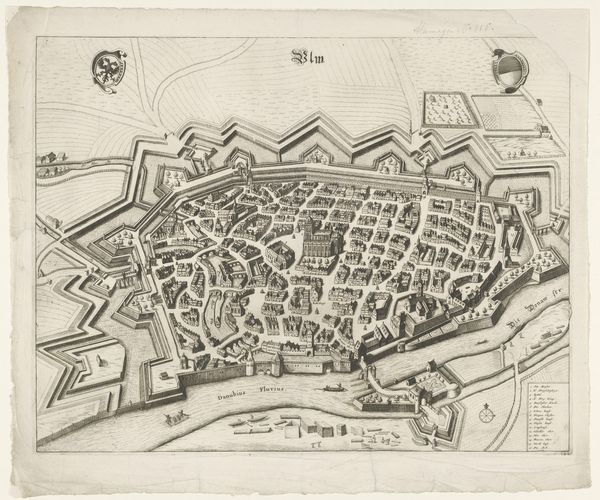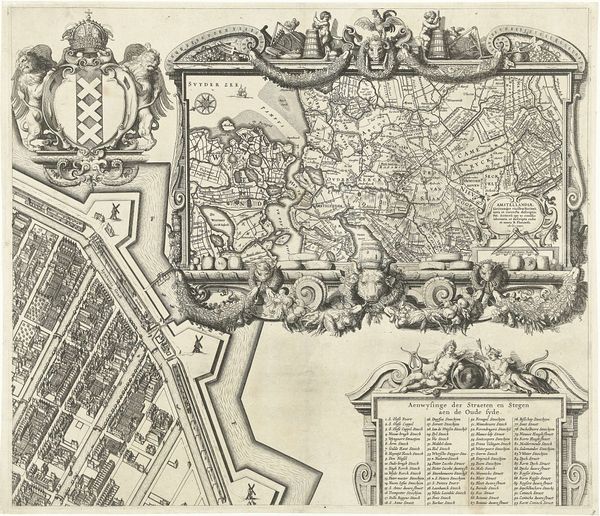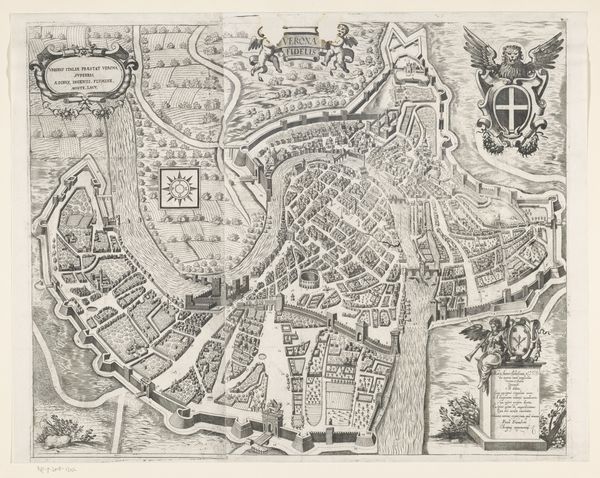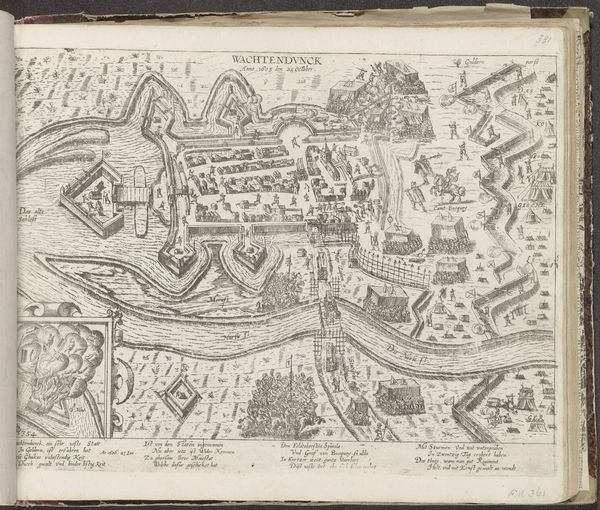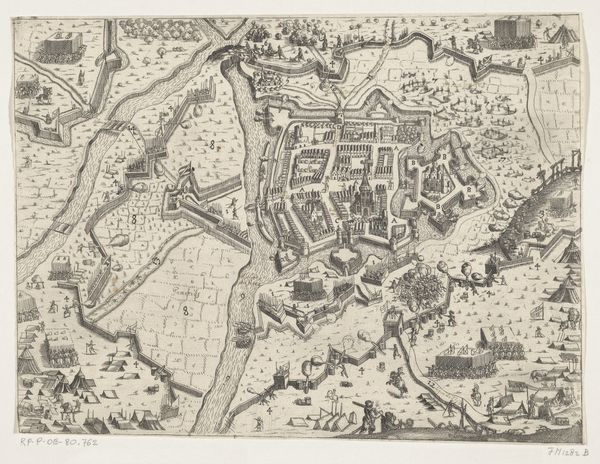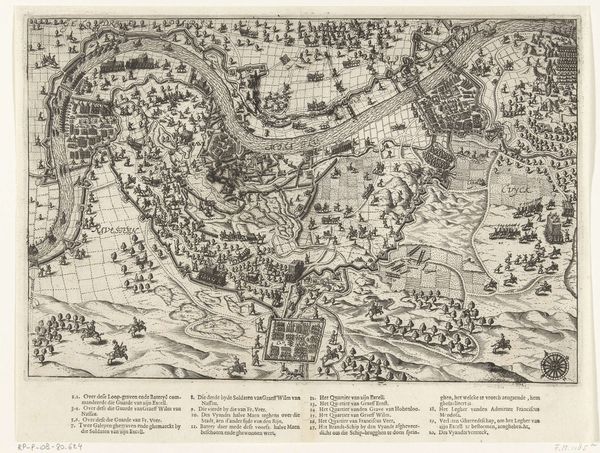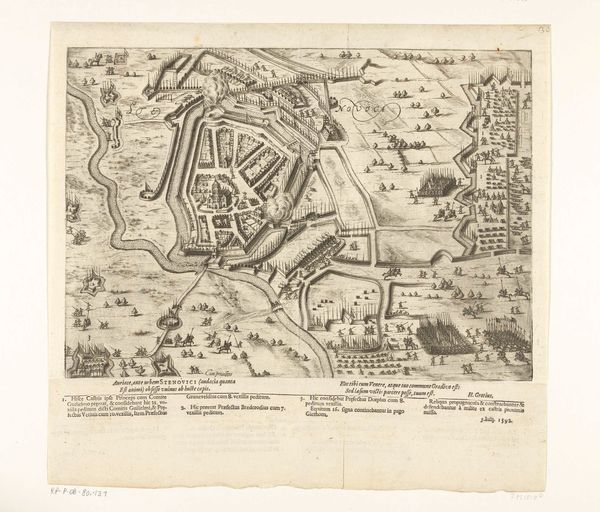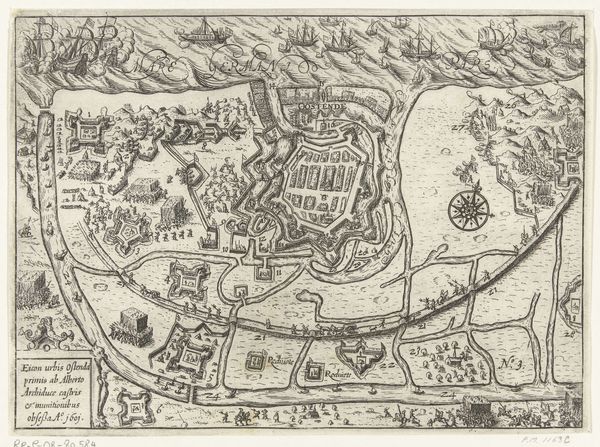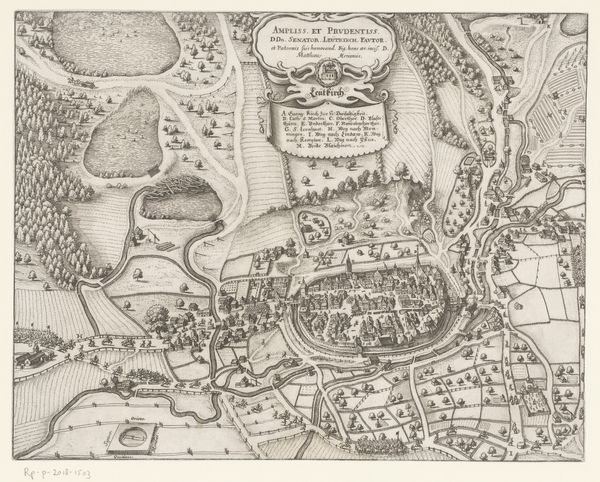
print, engraving
#
aged paper
#
baroque
# print
#
old engraving style
#
landscape
#
geometric
#
cityscape
#
engraving
Dimensions: 1850 mm (height) x 1300 mm (width) (monteringsmaal), 472 mm (height) x 672 mm (width) (bladmaal)
Curator: Here we have Matthäus Greuter’s "Map of Rome, upper right part," an engraving dating from 1634. Its delicate lines on aged paper evoke a profound sense of history. What strikes you initially about its formal qualities? Editor: The starkness, the almost militaristic precision of the layout. It feels less like a guide and more like an assertion of power—land ownership, control of urban space. Curator: That's astute. Greuter’s mastery is evident in the engraving's composition. The geometric forms—the clear, precise rendering of streets and buildings—establish a visual order, a hierarchical structuring of space that echoes the city's socio-political framework. Look at how line weight and density create areas of focus. Editor: Indeed. Considering the period, the Church held significant sway. How might the map reflect Rome’s role as a center of religious and political power at the time? What narrative does the architecture of its most dominant structure tell? Curator: I think you raise a vital point. The buildings are delineated sharply, with attention paid to elevation and detail that serves both cartographic and aesthetic purposes. The walls clearly communicate defense and order. Editor: Precisely. What narratives might be excluded or hidden beneath this seemingly objective rendering of space? Who is truly represented in this portrayal of power? Curator: A fruitful question. The lack of figures suggests an emphasis on the grand design rather than the daily lives of inhabitants, it presents an idealized and somewhat detached view. Editor: It's as much a statement of control and idealized power than simply about mapping its geography, perhaps? This engraving, while beautiful in its craft, served a purpose embedded within its time. Curator: Perhaps you're right. Ultimately, the print testifies to Rome's enduring legacy, skillfully capturing its unique physical form, even as it underscores broader social questions. Editor: Well, examining this aged piece has allowed me to really see this landscape. Thank you!
Comments
No comments
Be the first to comment and join the conversation on the ultimate creative platform.
